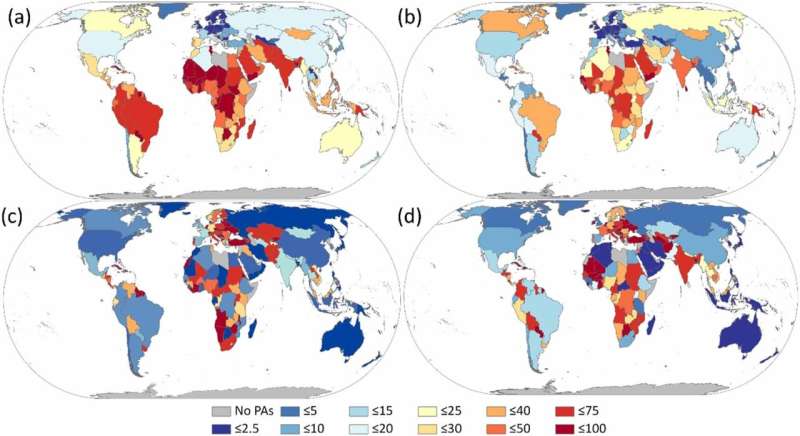Changing climate impacts biodiversity in protected areas globally

Protected areas—such as nature reserves, national parks, and wilderness areas—are essential to conserving biodiversity. New research published in Environmental Research Letters provides insights for developing climate-smart conservation strategies. The study looked at the global network of protected areas, evaluated potential for shifts in where plants and animals occur due to climate change, and as a result identifies the need for strategic conservation plans that transcend international borders and protect at-risk species.
"As the planet continues to warm, we expect a number of species to move out of some protected areas and into others as they shift their ranges in response to climate change," says lead-author Sean Parks, a research ecologist with the USDA Forest Service Rocky Mountain Research Station, Aldo Leopold Wilderness Research Institute.
The researchers found that some species currently in protected areas may have to cross international boundaries to find more suitable climate conditions. As they move, they may face physical barriers, such as border fences, and non-physical barriers, such as inconsistent conservation policies in different areas and countries.
Climate conditions are expected to change in over a quarter of the current land-based global network of protected areas under a scenario of 2°C warming. The study found that more than a third of protected lands could gain new climates. Understanding these shifts away from known to new climate conditions within protected areas helps the international conservation community forecast planning needs and make more strategic investment decisions for limited conservation funding.
"The Rocky Mountain Research Station is committed to addressing the threat of climate change, by providing research needed to support new strategies for stewarding protected areas and other wildlands within the United States and internationally," says Jason Taylor, Director of the Aldo Leopold Wilderness Research Institute.
More information: Sean A Parks et al, Efficacy of the global protected area network is threatened by disappearing climates and potential transboundary range shifts, Environmental Research Letters (2022). DOI: 10.1088/1748-9326/ac6436
Journal information: Environmental Research Letters
Provided by USDA Forest Service





















